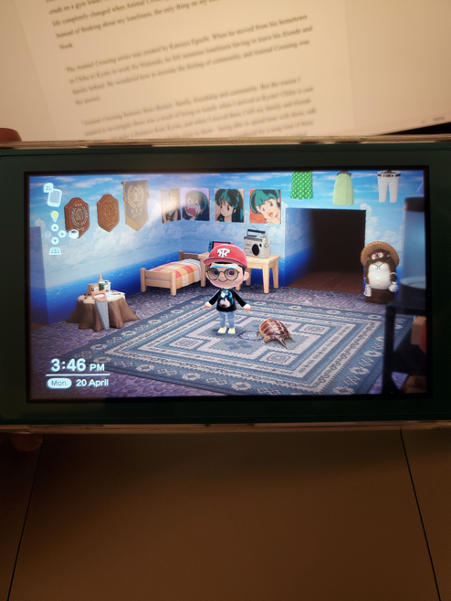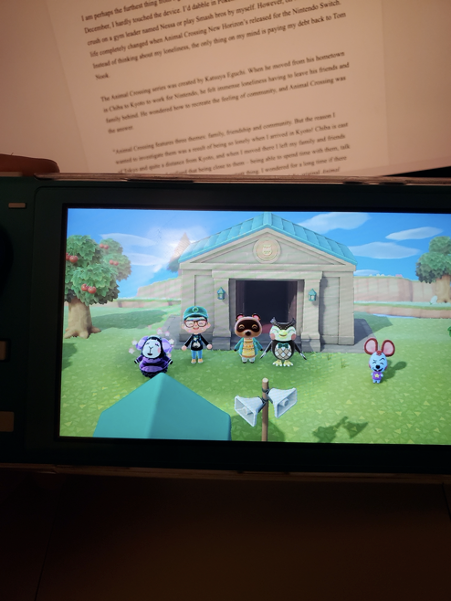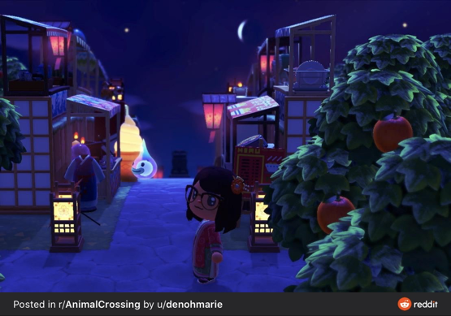Animal Crossing: New Horizons, an Adorable Game Better Than Real Life
I am perhaps the furthest thing from a gamer, and having received a Switch Lite back in December, I hardly touched the device. I’d dabble in Pokémon Shield, mostly because I had a crush on a gym leader named Nessa or play Smash Brothers by myself. However, on March 20, 2020, my life completely changed when Animal Crossing New Horizons released for the Nintendo Switch. Instead of thinking about my loneliness, the only thing on my mind is paying my debt back to Tom Nook.
The Animal Crossing series was created by Katsuya Eguchi. When he moved from his hometown in Chiba to Kyoto to work for Nintendo, he felt immense loneliness having to leave his friends and family behind. He wondered how to recreate the feeling of community, and Animal Crossing was the answer. He said, “Animal Crossing features three themes: family, friendship and community. But the reason I wanted to investigate them was a result of being so lonely when I arrived in Kyoto! Chiba is east of Tokyo and quite a distance from Kyoto, and when I moved there I left my family and friends behind. In doing so, I realised that being close to them – being able to spend time with them, talk to them, play with them – was such a great, important thing. I wondered for a long time if there would be a way to recreate that feeling, and that was the impetus behind the original Animal Crossing.”
The basic plot of New Horizons is that there really is no plot; it’s a very open-ended game. After purchasing a deserted island package from Tom Nook, a Tanuki businessman, the player is responsible for developing their island in however they see fit. Furthermore, Tom Nook offers the player a house in which a certain amount of debt is to be paid back after an indefinite amount of time; the player pays back whenever they want, so they are free to do as they please.

The Animal Crossing series is famous for its customization features. For example, within a player’s house, there are many pieces of furniture, wallpaper and flooring options to decorate your house with, allowing players to create their dream home. Furthermore, they are able to create custom paintings or clothing to share online for other players to use for themselves in their own island. As you continue to pay back your debt, your house becomes more spacious, and there is more room for design ideas. More dramatic would be the terraforming tool. This is a brand-new feature never seen before in other games and fans were thrilled that another tier of customization would be available to them. This allows the player to create or destroy cliffs, rivers and paths to shape the island to exactly how they desire.
The series is also known for its sense of community. There are over 400 villagers, though your island can only house up to nine. In addition to their cuteness, the dialogue created for each game is immense. Thousands of pages of dialogue were created, as this game was meant to be played over many years and as it was meant to combat loneliness. Of course, the characters aren’t real, but their presence is wholesome and comforting. They show concern when you are stung by wasps, compliment your outfits, thank you for your gifts, wear the clothing you design, and remember your birthday. These anthropomorphic villagers do not have a shred of hate in their heart, and even if you are alone, it feels as if you have friends who genuinely care for you.

Finally, the game gives the player a sense of accomplishment. For example, the Nook Miles app in the in-game phone rewards the player with “Nook Miles,” which can be redeemed to visit other islands to gather resources or to buy item recipes, furniture, hairstyles, or clothes for customization. The player can also plant fruit trees and flowers in order to beautify their island, which is also why this game can be compared to a yard work simulator. In addition, the player is encouraged to complete the “Critterpedia,” which records each fish or insect caught, as well as donate creatures to a beautifully designed museum curated by an owl named Blathers. Fish and insects can also be sold off to the Nook’s Cranny, managed by two small Tanukis named Timmy and Tommy in order to make money in order to fund more customization projects, or to pay off your debt to Tom Nook. Whether it be planting trees or earning money, the reward of the hard fruits of your labor is a beautiful island you will cherish for many years. Perhaps the island will never remain permanent, as the player can reshape their island however many times they please, and the cycle of hard labor begins yet again, but the feeling of accomplishment remains the same.
Animal Crossing: New Horizons has filled my life with peace. Tasks considered mundane such as fishing, yard work, or paying off my debt have never been more fulfilling, as in the end, they will contribute to the development of my island. The villagers are also happy with the island and live together in harmony, always happy to start a conversation to brighten my day. The island is developing into a small, tight-knit community completely separate to the pains of real life. In a positive world void of loneliness and in which the only concern is the beauty of the island, Animal Crossing: New Horizons is perhaps better than real life itself. Animal Crossing is the solution for world peace.
Featured image— The ultimate utopia void of loneliness and evil Courtesy of u/denohmarie
by Wesly Wong

